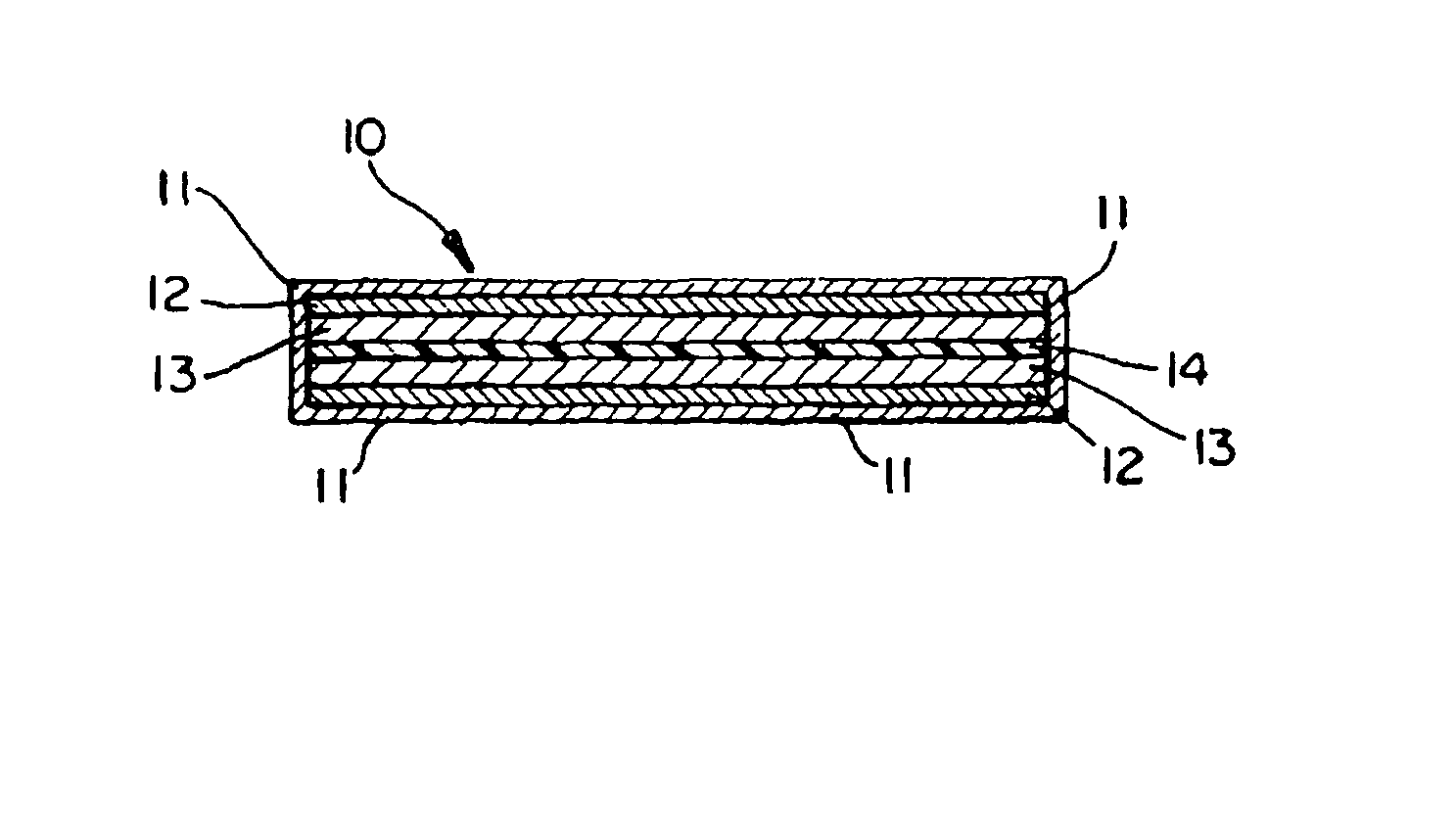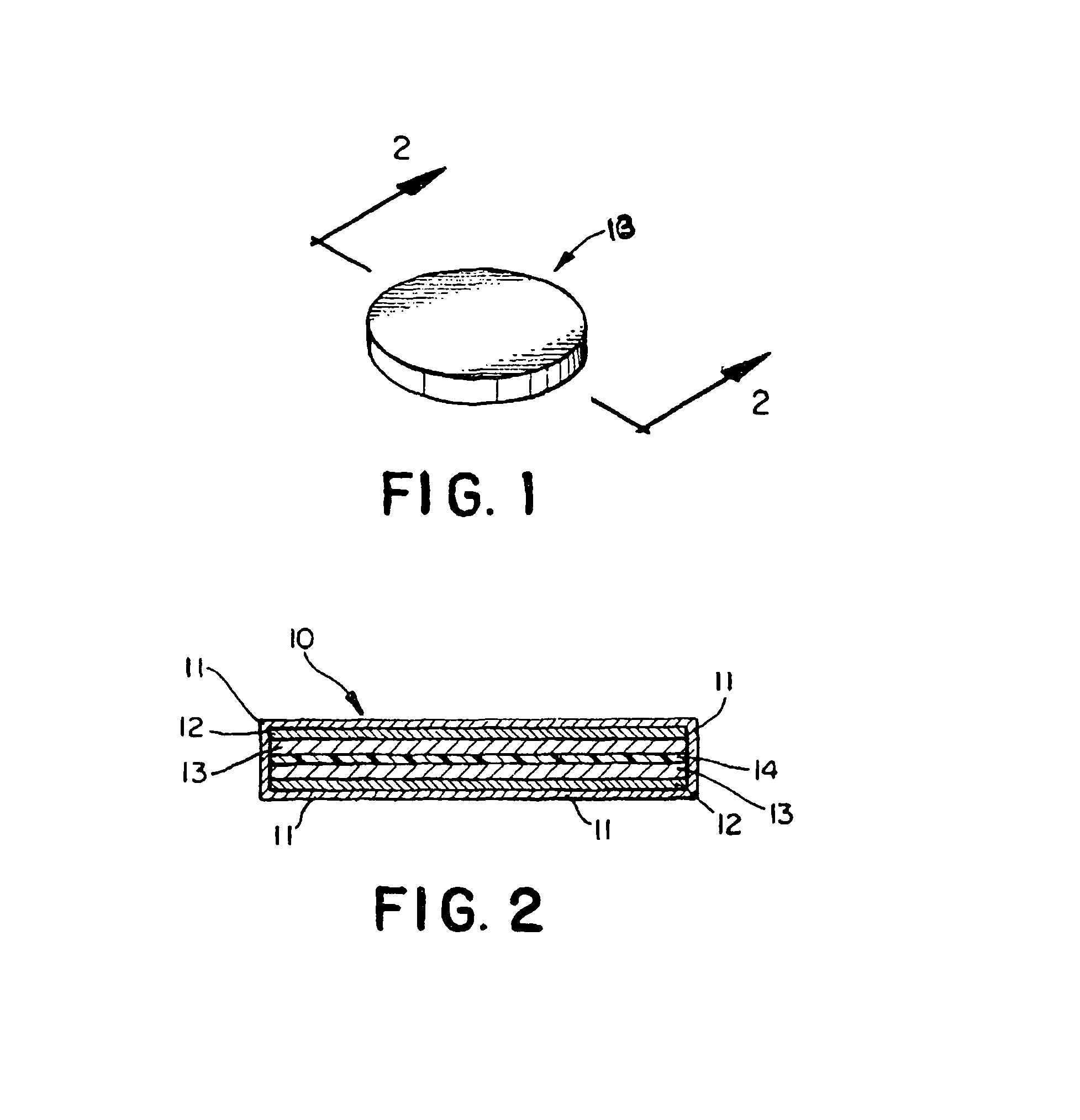Carbon electrodes and electrochemical capacitors
a technology of electrochemical capacitors and carbon electrodes, which is applied in the direction of electrolytic capacitors, electrochemical generators, primary cells, etc., can solve the problems of increased resistance and performance loss
- Summary
- Abstract
- Description
- Claims
- Application Information
AI Technical Summary
Benefits of technology
Problems solved by technology
Method used
Image
Examples
example 1
Preparation of Electrode
[0038]A. The carbon electrodes can be seen in FIGS. 1 and 2 prepared by forming an acetone slurry of 10% Kynar® resin and 90% carbon (0.5-10 microns) which have been treated to remove ash and silica. The mixture is cast onto a flat Teflon sheet and then the acetone is allowed to evaporate. The dried sheet is removed from the Teflon and ⅝″ circular electrodes are die cut and vacuum dried. The electrodes weigh about 0.01 gram and are 4 mil in thickness.
[0039]B. Alternatively, a carbon electrode (20) can be prepared as seen in FIGS. 3 and 4 by preparing the end plates (21) from a sheet of aluminum coated with a thin liquid conductive carbon dispersion and then baked. One dry, proper sized discs (21) are punched from the sheet and put on a roller to flatten the edges. Surlyn® rings (23) are then heat sealed to the end plates (21). The heat treated carbon is then made into a paste with 10% Surlyn binder and acetone. The paste is rolled into a sheet of about 4 mm o...
example 2
[0041]
Comparison of Capacitor Test Cells with DEDMABF4 in50 / 50 EC / PC Electrolyte Using Post-Treated Norit 30Carbon (0.008 g)CONCEN-RELATIVETRATION OFMACCORELECTROLYTEENERGYDEDM-BF4,LEAKAGECAPACITANCE(100 cycles)EC-PCESREIS(FARADS)mAh1.00 M 0.65VG0.50 (2.0 V)NAnone0.69 (4.1 V)0.291.5 M0.67VG0.56 (2.0 V)NAnone0.72 (4.1 V)0.352.0 M0.64VG0.37 (2.0 V)NAnone0.84 (4.1 V)0.343.0 M0.52VG0.72 (4.1 V)0.36noneThe greater molarity results in improved energy
PUM
 Login to View More
Login to View More Abstract
Description
Claims
Application Information
 Login to View More
Login to View More - R&D
- Intellectual Property
- Life Sciences
- Materials
- Tech Scout
- Unparalleled Data Quality
- Higher Quality Content
- 60% Fewer Hallucinations
Browse by: Latest US Patents, China's latest patents, Technical Efficacy Thesaurus, Application Domain, Technology Topic, Popular Technical Reports.
© 2025 PatSnap. All rights reserved.Legal|Privacy policy|Modern Slavery Act Transparency Statement|Sitemap|About US| Contact US: help@patsnap.com



